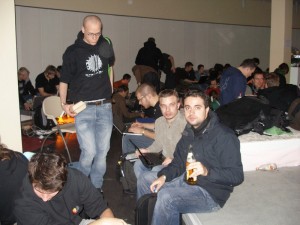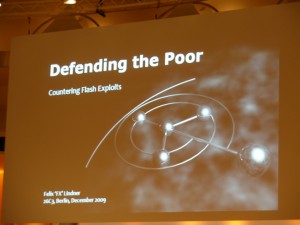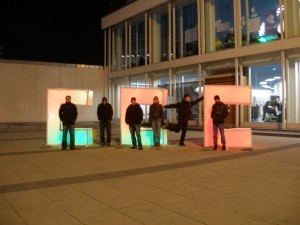3 days ago, after a Debian(squeeze/sid) upgrade on my laptop some programs started not to open. Specifically, pidgin and google-chrome were crashing while trying to open them. When I started them from a terminal the output was this:
kargig@laptop:~%pidgin
[1] 3853 abort pidgin
kargig@laptop:~%google-chrome
[1] 3882 abort google-chrome
The first thing I checked was the updated packages, whether there was some culprit.
The upgraded packages included among others:
[UPGRADE] libk5crypto3 1.8.3+dfsg-1 -> 1.8.3+dfsg-2
[UPGRADE] libkrb5-3 1.8.3+dfsg-1 -> 1.8.3+dfsg-2
[UPGRADE] libkrb5support0 1.8.3+dfsg-1 -> 1.8.3+dfsg-2
[UPGRADE] libnspr4-0d 4.8.4-2 -> 4.8.6-1
[UPGRADE] libnss3-1d 3.12.6-3 -> 3.12.8-1
[UPGRADE] linux-base 2.6.32-23 -> 2.6.32-25
[UPGRADE] linux-headers-2.6.32-5-686-bigmem 2.6.32-23 -> 2.6.32-25
[UPGRADE] linux-headers-2.6.32-5-common 2.6.32-23 -> 2.6.32-25
[UPGRADE] linux-image-2.6.32-5-686-bigmem 2.6.32-23 -> 2.6.32-25
[UPGRADE] linux-libc-dev 2.6.32-23 -> 2.6.32-25
[UPGRADE] xserver-xorg-video-intel 2:2.9.1-4 -> 2:2.12.0+shadow-2
My first point of checking was the xserver-xorg-video package. I started searching the Debian bug tracking system for references of crashes with abort. Nothing. Then I tried to check the other “suspicious” packages with abort crash reports on the bug tracker…still nothing.
It was time for strace.
kargig@laptop:~%strace pidgin
...
[snip]
...
open("/usr/lib/nss/libfreebl3.so", O_RDONLY) = 14
read(14, "\177ELF\1\1\1\0\0\0\0\0\0\0\0\0\3\0\3\0\1\0\0\0\0\30\0\0004\0\0\0"..., 512) = 512
fstat64(14, {st_mode=S_IFREG|0644, st_size=253328, ...}) = 0
mmap2(NULL, 268988, PROT_READ|PROT_EXEC, MAP_PRIVATE|MAP_DENYWRITE, 14, 0) = 0xb58e3000
mmap2(0xb5920000, 4096, PROT_READ|PROT_WRITE, MAP_PRIVATE|MAP_FIXED|MAP_DENYWRITE, 14, 0x3d) = 0xb5920000
mmap2(0xb5921000, 15036, PROT_READ|PROT_WRITE, MAP_PRIVATE|MAP_FIXED|MAP_ANONYMOUS, -1, 0) = 0xb5921000
close(14) = 0
open("/etc/ld.so.cache", O_RDONLY) = 14
fstat64(14, {st_mode=S_IFREG|0644, st_size=79200, ...}) = 0
mmap2(NULL, 79200, PROT_READ, MAP_PRIVATE, 14, 0) = 0xb5ab7000
close(14) = 0
access("/etc/ld.so.nohwcap", F_OK) = -1 ENOENT (No such file or directory)
open("/usr/lib/swiftfox/libnspr4.so", O_RDONLY) = 14
read(14, "\177ELF\1\1\1\0\0\0\0\0\0\0\0\0\3\0\3\0\1\0\0\0P\227\0\0004\0\0\0"..., 512) = 512
fstat64(14, {st_mode=S_IFREG|0755, st_size=251136, ...}) = 0
close(14) = 0
munmap(0xb5ab7000, 79200) = 0
rt_sigprocmask(SIG_UNBLOCK, [ABRT], NULL, 8) = 0
tgkill(4027, 4027, SIGABRT) = 0
--- SIGABRT (Aborted) @ 0 (0) ---
+++ killed by SIGABRT +++
[1] 4026 abort strace pidgin
What immediately caught my eye was this line inside the output:
open("/usr/lib/swiftfox/libnspr4.so", O_RDONLY) = 14
I have a 3rd party package called swiftfox installed, but why was pidgin trying to use this package’s library instead of the system one ?
# ldconfig -p | grep nspr4
ldconfig -p | grep nspr4
libnspr4.so.0d (libc6) => /usr/lib/libnspr4.so.0d
libnspr4.so (libc6) => /usr/lib/swiftfox/libnspr4.so
libnspr4.so (libc6) => /usr/lib/libnspr4.so
So the system package libnspr4-0d has installed its files in /usr/lib/libnspr4.so.0d and has also placed a symlink from /usr/lib/libnspr4.so to /usr/lib/libnspr4.so.0d. For some reason though the /usr/lib/swiftfox/libnspr4.so appears before /usr/lib/libnspr4.so in the cache output for the libnspr4.so library.
Checking out /etc/ld.so.conf.d/ directory, there was a moz.conf file containing the path “/usr/lib/swiftfox/“.
An “ldconfig -v” confirmed the finding:
/usr/local/lib:
/usr/lib/swiftfox:
libnssckbi.so -> libnssckbi.so
libssl3.so -> libssl3.so
libsqlite3.so -> libsqlite3.so
libnssutil3.so -> libnssutil3.so
libnss3.so -> libnss3.so
libnspr4.so -> libnspr4.so
libsmime3.so -> libsmime3.so
libmozjs.so -> libmozjs.so
libsoftokn3.so -> libsoftokn3.so
libplc4.so -> libplc4.so
libxul.so -> libxul.so
libplds4.so -> libplds4.so
libxpcom.so -> libxpcom.so
libnssdbm3.so -> libnssdbm3.so
libfreebl3.so -> libfreebl3.so
/lib:
libnss_compat.so.2 -> libnss_compat-2.11.2.so
libselinux.so.1 -> libselinux.so.1
...
[snip]
...
Moving /usr/lib/swiftfox/libnspr4.so to some other location allowed applications like pidgin and google-chrome to start normally (and swiftfox still runs properly).
I guess that was my punishment for using 3rd party packages on Debian…
*UPDATE 23/11/2010*
Google chrome was crashing with some https:// sites with SIGABRT. After further investigation I had to delete /usr/lib/swiftfox/libnssutil3.so as well.
 Filed by kargig at 20:01 under Greek,Internet,Linux,Networking,Privacy
Filed by kargig at 20:01 under Greek,Internet,Linux,Networking,Privacy 8 Comments
8 Comments







